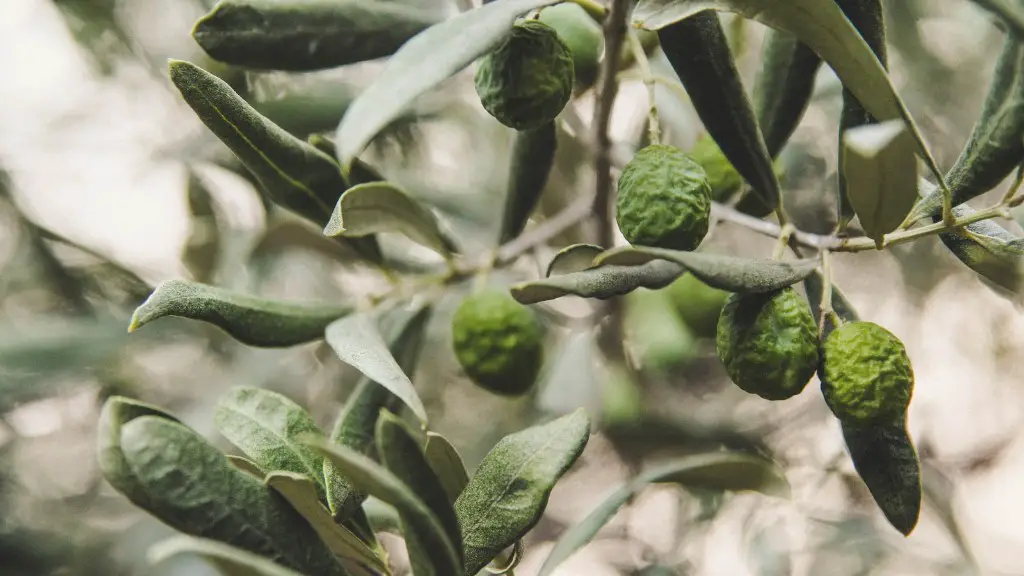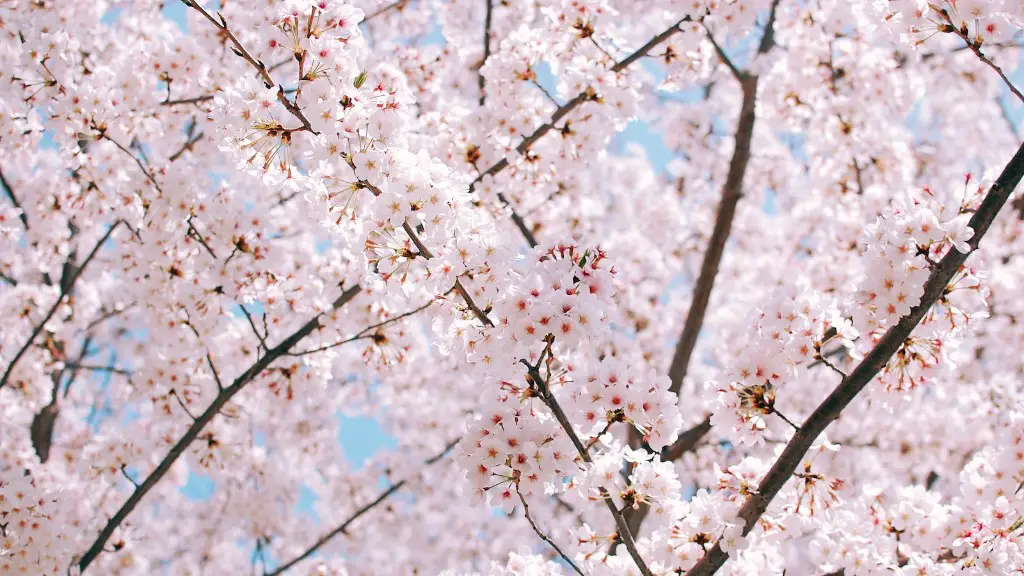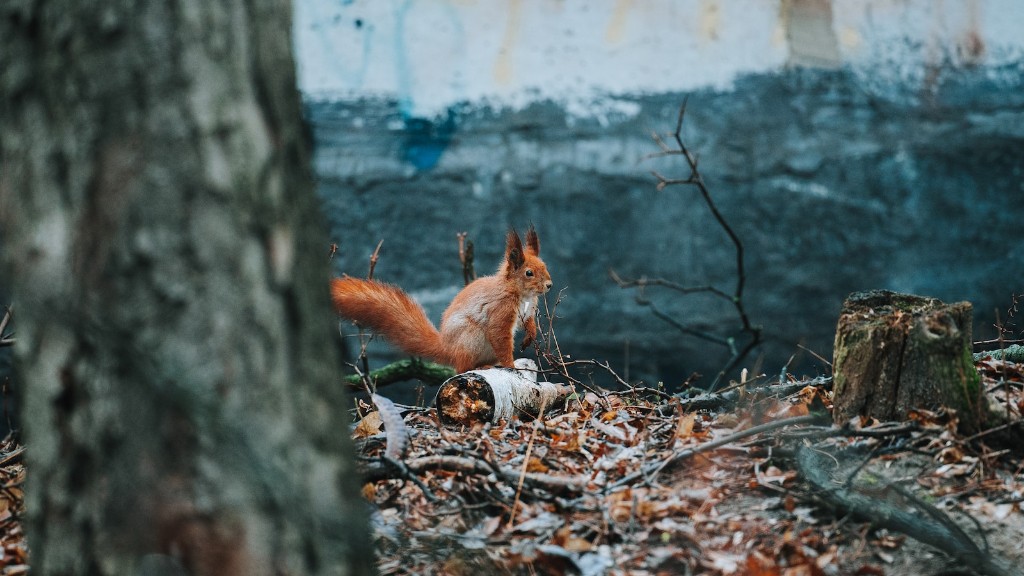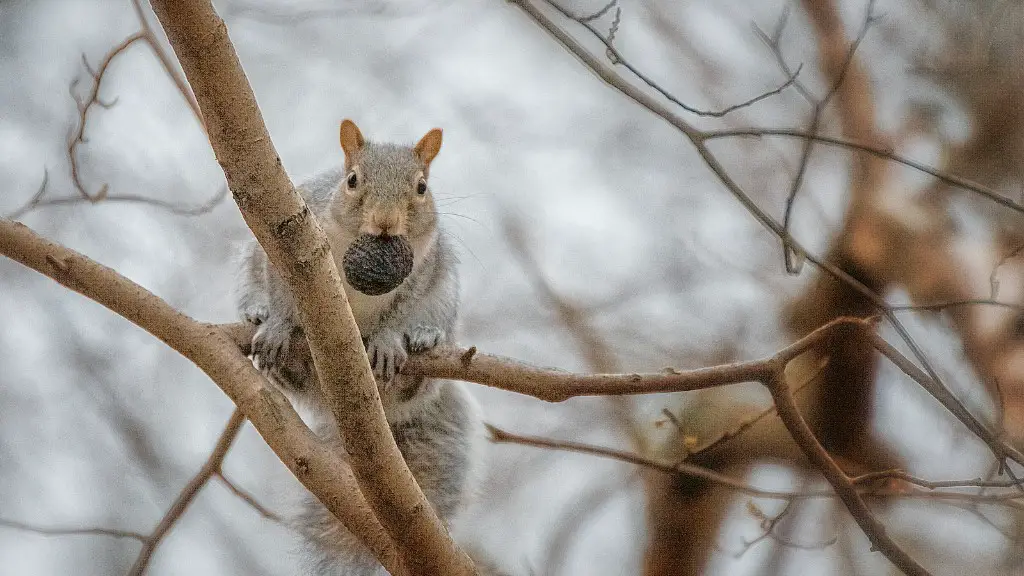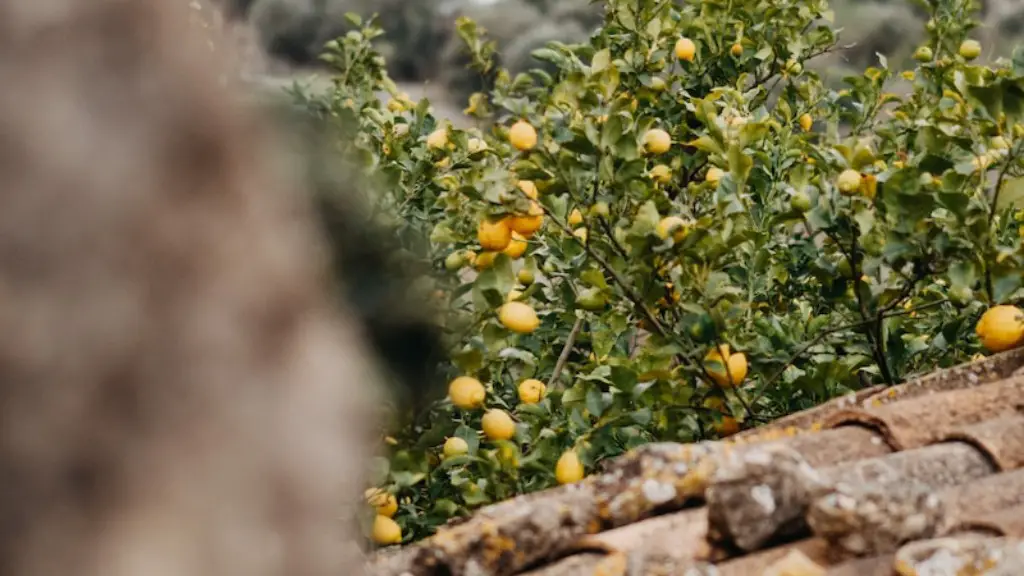Meyer lemons are an attractive and rare variety of citrus fruit that possess a remarkable combination of sweet and tart flavors, making them a popular choice in many kitchens and recipes. But, many home gardeners may have questions about when a Meyer lemon tree produces fruit.
The good news is that, unlike other varieties of citrus trees, Meyer lemon trees tend to bear abundant fruits for home gardeners even without pruning and other maintenance. Additionally, the trees begin bearing lemons as early as their second or third year of life, with the first fruiting season being the largest.
It is important to know, however, that Meyer lemons require warmer climates to fruit, meaning those tree owners located in cooler parts of the country may have difficulty finding success with the variety. The tree requires temperatures above 45 degrees Fahrenheit and humidity levels between 65 and 85 percent to produce bountiful fruits. Temperatures below 10 degrees Fahrenheit can potentially be fatal to the tree.
In general, Meyer lemons will produce abundant fruit in spring and summertime, provided they are given adequate amounts of water, fertilizer and protection from intense heat. However, in actuality, the tree can be productive off and on year-round, depending on the environment. For gardeners who want to increase the fruit from their Meyer lemon trees, diligent pruning, fertilizing and keeping the tree stress-free can be quite beneficial.
Meyer lemon trees also tend to be self-pollinating, meaning that a single tree can produce lemons all on its own. This comes as a welcome relief for those gardening in more isolated spaces that are not conducive to cross-pollination. Although, for those looking for a more fruitful harvest, companion planting with other types of citrus trees can provide beneficial results. For example, oranges can be safely planted near a Meyer lemon tree, as their bloom times are staggered and thus allow both to flourish.
The fragrant white flowers that appear on the tree in springtime provide an indication that lemons will be coming in a few months. If left unpicked, the lemons will turn a deep yellow when they are ripe and ready to be plucked. The result of a homegrown Meyer lemon tree is nothing less than sweet and juicy, making every fruiting season something that gardeners can look forward to.
The Life of a Meyer Lemon Tree
Meyer lemon trees hold a special place in many gardens, prized for their unique flavor, aesthetics and comparatively easy care. They can reach an impressive height of 10-15 feet tall and can be grown in containers indoors, offering home gardeners ample opportunity to enjoy their tangy treats. The tree also can live in excess of 30 years, so once established, it can be enjoyed season after season.
The tree begins with a lush bright green foliage, which may produce yellow blooms throughout the year. With proper care, the tree can produce two or more harvests a year. The round, medium-sized fruits are often harvested when they are still yellow, as this is when their naturally tart-sweet balance of flavor is at its most robust.
Meyer lemon trees require full sun to partial shade, and cool but not cold temperatures. These trees are also relatively drought-tolerant but should still be watered regularly. In areas vulnerable to freezes, using protective cloth wraps in winter months is advised for optimal protection.
Though these trees are fairly resilient, there are some common pests and problems that can affect a tree’s health. Anthracnose, red scale, oleander aphids and mealybugs are among the most common pests that may attack a Meyer lemon tree. Meanwhile, too much fertilizer, poor water drainage or overwatering can lead to nutritional deficiencies or diseases like root rot.
Luckily, many of these issues can be resolved through regular tree maintenance and timely applications of insecticides and fungicides, when necessary.
Storing, Sharing and Enjoying Meyer Lemons
Meyer lemons are praised around the world for their flavorful and fragrant qualities, but home growers should take into consideration how best to store and share the delicious fruits of their tree. These lemons will stay fresh in the refrigerator for up to two weeks and can be stored for up to a month in the freezer.
Meyer lemons can also be used for many culinary creations, from salads and desserts to beverages and cocktails. Popular recipes such as lemon meringue pie, lemon butter cookies and Meyer lemon cakes are also a hit. For those who want to share their harvest with friends, preserved lemons and lemons filled with herbs make fantastic gifts.
Be creative with uses of your Meyer lemons and they are sure to surprise and delight both family and guests. Healthful lemon-based beverages such as lemonade and flavor-infused lemon water can be prepared by those who want to enjoy a back porch sip on a summer day.
Succulent Meyer lemons can also be used for medicinal purposes, such as relieving a sore throat or providing a boost to the immune system. Sweet Meyer lemonades and teas, homemade with the fresh fruits of your tree, can be made to take advantage of their natural health benefits.
A Meyer Lemon Success Story
Meyer lemon trees, when properly planted and cared for, can provide fruit-makers with an abundance of sweet-tart lemons that are certain to make any kitchen shine. Ted, living in a rural Southern California neighborhood with limited sun exposure, managed to succeed with a Meyer lemon tree that outpaced his expectations.
Driven by his passion and thirst for knowledge of cultivation, Ted spent the better part of his free time researching and trial-and-erroring his way to success. He provided proper drainage, protection from freezing weather, and light fertilizing to his tree – and each year it blossomed with a healthy harvest.
At the end of each season, Ted had more lemons than he knew what to do with. He proudly shared a portion of his bounty with family, friends and neighbors. In addition to replenishing his own lemons, Ted also made use of his trees for homemade herbal teas and infused vinegar recipes.
Ted was a living example of how a nearly impossible feat can be accomplished with determination and understanding of the subtleties of gardening. Thanks to his diligence and attention to detail, his Meyer lemon tree became the envy of the neighborhood, outshining all other lemons trees with its abundance of juicy fruits and fragrant blooms.
Growing a Meyer Lemon Tree Indoors
Growing a Meyer lemon tree indoors can be a great way to benefit from the tree’s yield without having to own a piece of land. Even with limited space, anyone can have their own citrus oasis with a Meyer lemon tree.
The first step is to select a container that is on the larger side. The bigger the pot, the better as this will provide more elbow room for the tree’s roots and a more stable foundation for its growth. Furthermore, the tree will also benefit from being placed near a south- or west-facing window that will provide ample sunlight.
Like their outdoor cousins, Meyer lemon trees grown indoors need to be watered regularly. This is meant to closely mimic their natural habitat. The soil should be kept moist, but not overly saturated, as this may lead to root rot and other preventable issues. The tree should also be fed with a citrus-specific fertilizer every few months.
In addition to regular care, an indoor Meyer lemon tree should be winterized when the colder months set in. Temperatures that are too cold or too hot can cause issues in the tree. Unhealthy citrus trees may produce fewer fruits, or none at all. To avoid this, if temperatures dip below 50 degrees Fahrenheit, home growers should cover the tree with a cloth or light blanket.
By investing a bit of time, energy and effort into caring for an indoor Meyer lemon tree, home growers can enjoy the fruits of their labor for years to come.
Planting a Meyer Lemon Tree in the Ground
For those who have access to land, a traditional planting method is a great option for enjoying a bounty of flavorful Meyer lemons. But for successful growth, proper care and construction are essential
The first step is to ensure the tree has an ample amount of sunlight throughout the day. Meyer lemon trees prefer several hours of direct sunlight each day. Additionally, at the planting site, home growers should make sure the soil is deep, well-drained and has a pH level between 5.5 and 6.5.
Before moving forward with the actual planting, it is important to pick the right Meyer lemon tree as this will directly impact its future growth. The tree should appear healthy and vibrant and should feel slightly heavy for its size. Additionally, the texture of the firm rind should have a slight bumpy texture.
Once the tree has been selected and the site is ready, the planting can begin. Home growers will need to dig a hole twice the size of the root ball and mix the native soil with compost or aged manure and potting soil to create a more fertile bed. The tree should then be placed in the prepared soil and secured by packing the soil back around the root system.
The final steps involve adding a generous layer of mulch around the base of the tree and regularly watering it to help settle the soil. After the first month, home gardeners can transition to regular weeding and mowing as long as they avoid clearing too close to the trunk of the tree.
With proper care and patience, home gardeners are sure to enjoy the sweet rewards of their Meyer lemon tree for years to come.

